We may earn a commission from links on our site, but this doesn’t affect our reviews. Learn more.
Hedge With Crypto is an independent publisher that provides objective and free content. Articles on our site may include links to our partners. If you click on these links, we may earn a commission. However, our editorial content remains unbiased, reflecting our own opinions or the general information available. For more information on our company policies, read the Affiliate Disclosure, Privacy Policy, and Terms & Conditions.
10 Best Bitcoin Mining Hardware
With the price of bitcoin remaining highly volatile, choosing the right mining equipment for Bitcoin has never been more important. Unfortunately, this is not an easy process, particularly for those unfamiliar with the crypto mining industry.
Hedge With Crypto aims to publish information that is factual and accurate as of the date of publication. For specific information about a cryptocurrency exchange or trading platform please visit that provider’s website. This information is general in nature and is for educational purposes only. Hedge With Crypto does not provide financial advice nor does it take into account your personal financial situation. We encourage you to seek financial advice from an independent financial advisor where appropriate and make your own inquiries.
TABLE OF CONTENTS
There is now a wide variety of Bitcoin mining hardware on the market. Each unit produces a different hash rate output, consumes a different amount of electricity, and offers a different range of features. To help future Bitcoin miners choose the right hardware, we have collated the best Bitcoin mining hardware that is available today.
Here is our final list of the best Bitcoin mining rigs and hardware to consider this year:
- Antminer S19 Pro
- WhatsMiner M30S++
- Antminer S19 XP
- WhatsMiner M32-62T
- Antminer T9+
- AvalonMiner 1246
- AvalonMiner A1166 Pro
- Bitmain Antminer S5
- WhatsMiner M3X
- DragonMint T1
Featured Partner
Kraken
Crypto platform for smarter investing.
4.8 out of 5.0
Kraken is a US-based crypto trading platform that is best suited for users who need crypto-to-fiat and crypto-to-crypto trading facilities. One of the most regulated and security-focused exchanges, Kraken is a great choice.
200+
USD, GBP, EUR, CAD, CHF, JPY & AUD
Bank transfer, SWIFT, SEPA, debit and credit card
0.16% (maker) and 0.26% (taker)
The Best Bitcoin Mining Hardware Compared
| Miner Hardware | Price | Hash Power | Power Consumption | Weight | Temperature | Rating |
|---|---|---|---|---|---|---|
| Bitmain Antminer S19 Pro | $3,149 | 110 Th/s | 3250 W +/- 5% | 13.2 kg | 5 – 45 C | 10/10 |
| MircroBT WhatsMiner M30S++ | $2,699 | 110 Th/s +/- 5% | 3410 W | 11 kg | -10 – 40 C | 9/10 |
| Bitmain Antminer S19 XP | $6,499 | 140 TH/s | 3010 W | 14.5 kg | 5 – 45 C | 9/10 |
| MicroBT WhatsMiner M32-68T | $1,039 | 62 Th/s +/- 5 | 3348 W | 10.5 kg | -5 – 40 C | 8/10 |
| Bitmain Antminer T9+ | $399 | 10.5 Th/s | 1432 W | 4.2 kg | 0 – 40 C | 8/10 |
| Canaan AvalonMiner 1246 | $1,599 | 90 Th/s | 3420 W | 12.8 kg | -5 – 35 C | 8/10 |
| Canaan AvalonMiner A1166 Pro | $810 | 78 Th/s | 3276 W | 12.8 kg | -5 – 35 C | 7/10 |
| MicroBT WhatsMiner M3X | $899 | 12.5 Th/s | 2050 W | 7.5 kg | -10 – 45 C | 7/10 |
| Bitmain Antminer S5 | $299 | 1.155 Th/s | 590 W | 2.5 kg | 0 – 30 C | 6/10 |
| Halong DragonMint T1 | $1,600 | 16 Th/s | 1480 W | 6 kg | 0 – 40 C | 6/10 |
Why We Picked These Bitcoin Mining Hardware
1. Antminer S19 Pro
Released in May 2020, the Antminer S19 Pro shot to popularity thanks to its impressive operating efficiency. For individuals who want to start mining Bitcoin, the S19 is an excellent choice. With a maximum hash rate of 110 Th/s, pulled at 3250 W, its performance can only be matched by a few others.
Backed by Bitmain, a leader in the field of cryptocurrency mining, the S19 Pro implements a next-generation custom-built chip to help ensure high hashing power is achieved with the lowest possible electricity consumption. This is packaged within a unit that weighs 13.2 kg and boasts 4 in-built fans that assist with temperature control.
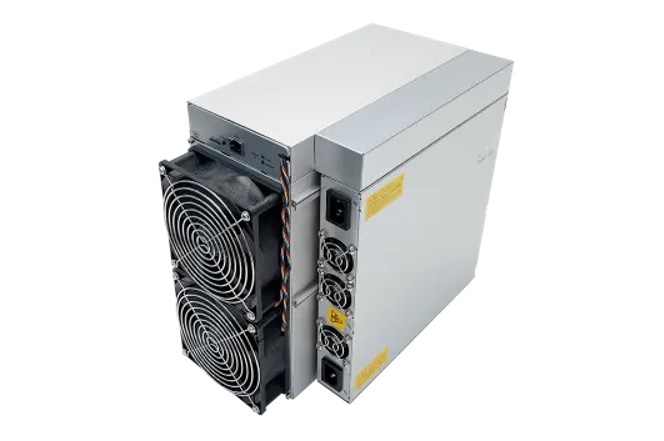
For retail miners, the setup of the unit is achieved comfortably via Antminer’s easy-to-use Bitcoin mining software, which allows for easy connection to mining pools and facilitates firmware upgrades from Bitmain.
However, the high efficiency of the S19 Pro comes at a steep price. With prices starting from $3,149, it is the third most expensive unit in our top 10 list. Although it is commonly a Bitcoin miner targeted at industrial activities, there is no reason the S19 Pro couldn’t be utilized by a retail miner if the environmental and cost implications could be handled.
Unfortunately, unlike more recent models, the S19 Pro can no longer be purchased directly from Bitmain, which means that the unit would need to be acquired from a third-party seller. As a result, all warranties would need to be checked with a third party.
Key Specs:
- Max hash rate – 110 Th/s
- Max power – 3250 W
- Noise level – 75 dB
- Temperature range – 5 – 45 C
- Weight – 13.2 kg
- Price – $3,149
Antminer S19 Pro Pros:
- One of the most efficient units available in the market
- Backed by a reliable manufacturer
- Wide operating temperature range
Antminer S19 Pro Cons:
- Requires high upfront capital costs to buy
- Can’t be purchased directly from manufacturer
- Larger size and power consumption is better suited to industrial operations
2. MicroBT WhatsMiner M30S++
The WhatsMiner M30S++ was first released in April 2020 and with a maximum hash rate of 110 Th/s the unit is often considered a direct competitor to Bitmain’s Antminer S19 Pro.
The M30S++ is one of the most powerful miners produced by, MicroBT, a mining manufacturer that was first launched in 2016. Despite being slightly younger than Bitmain, the company has managed to earn a respectable market share thanks to the reliability of its mining units.
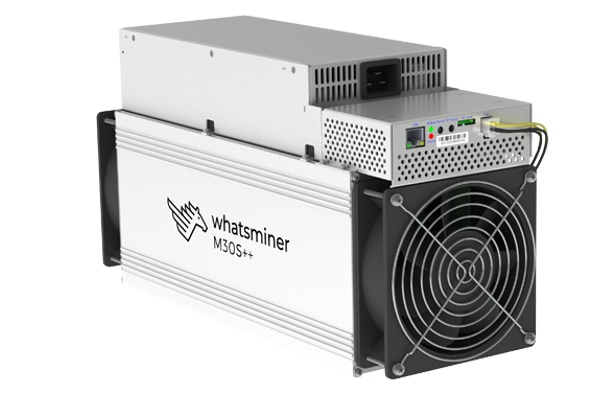
The M30S++’s maximum hash rate of 110 Th/s is achieved at a maximum power consumption of 3410 W. Although slightly less efficient than the Antminer S19 Pro, the miner remains competitive, particularly as higher electricity costs can be absorbed by the lower price tag of $2,699.
The setup of the M30S++ should be straightforward thanks to WhatsMiner’s built-in mining software. Alongside helping miners of all experience levels get the machine up and running, the software also keeps the unit up to date when new upgrades are released. The final advantage of the WhatsMiner M30S++ is that the unit can still be purchased directly from the manufacturer with a 12-month warranty.
Key Specs:
- Max hash rate – 110 Th/s
- Max power – 3410 W
- Noise level – 75 dB
- Temperature range – -10 – 40 C
- Weight – 11 kg
- Price – $2,699
MicroBT WhatsMiner M30S++ Pros:
- Strong hash rate output
- Versatile optimum operating temperature range
- Backed by a reliable manufacturer
- Can be purchased directly from the manufacturer with 12-month warranty
MicroBT WhatsMiner M30S++ Cons:
- High upfront capital costs to purchase
- Lower efficiency when compared to Antminer’s S19 Pro
- Larger size and power consumption is better suited to industrial mining rigs
3. Bitmain Antminer S19 XP
Bitmain’s Antminer S19 XP is the powerhouse of our top 10 list. Offering a max hash rate of 140 Th/s it stands at the top of mining capabilities and will be the most powerful and time-efficient to mine Bitcoin. Impressively, the max hash rate is achieved by max power consumption of 3010 W. Therefore, despite its serious mining power, the S19 XP is not the most power-hungry on the list.
The S19 XP was first launched in July 2022 and remains one of the most powerful miners in operation. Although measuring the same size as the S19 Pro the miner is slightly heavier sitting at 14.5 kg. With its high hash rate and power consumption it is often considered a miner targeted toward industrial operations.
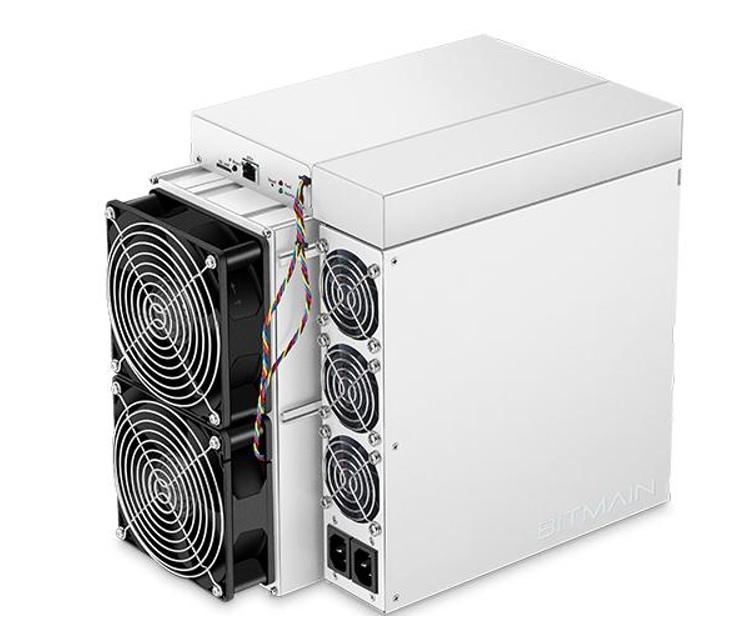
Like other Bitmain products, the setup of the miner can be achieved via Antminer’s internal software and two built-in fans help to keep the powerhouse between the optimum temperature range of 5 – 45 C.
As one of the most efficient and powerful mining machines ever developed, the S19 XP is highly sought after by professional miners which means the retail price is high, starting at $6,499. However, unlike other Bitmain models, the miner can still be purchased directly from the manufacturer with a 365-day warranty.
Key Specs:
- Max hash rate – 140 Th/s
- Max power – 3010 W
- Noise level – 75 dB
- Temperature range – 5 – 45 C
- Weight – 14.5 kg
- Price – $6,499
Bitmain Antminer S19 XP Pros:
- One of the most efficient miners currently available
- Extremely high hashing power of 140 Th/s
- Can be purchased directly from the manufacturer with 12-month warranty
Bitmain Antminer S19 XP Cons:
- Requires considerable upfront capital costs
- Higher power consumption is better suited to industrial operations
4. MicroBT WhatsMiner M32-68T
The WhatsMiner M32 is another mining unit produced by MicroBT and was launched a couple of months after its older brother, the M30S++. Like the M30S++, the M32 implements the SHA-256 mining algorithm which can mine bitcoin but the M32 is a far less powerful mining unit.
The M32 offers a maximum hash rate output of 62 Th/s (+/- 5 Th/s) at a maximum power consumption of 3348 W. With a comparable power consumption to the M30S++, this places the M32 at an efficiency disadvantage. However, the lower efficiency of the unit is covered by the upfront cost.
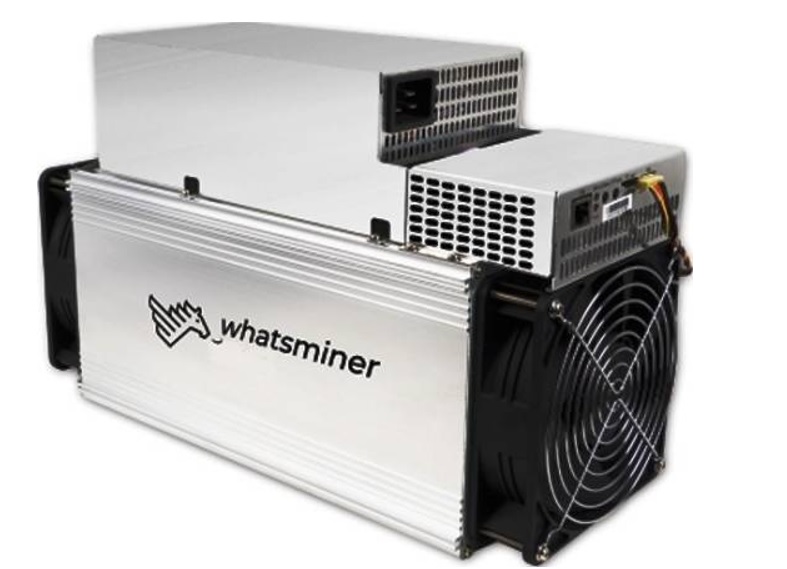
While the M30S++ can cost anywhere from $2,500 to $4,500, the M32 can be acquired for as little as $1,000. The lower upfront capital costs can, therefore, make it an appealing option to first-time miners who are still looking for a mid-range hash rate output.
Like the M30S++, the WhatsMiner M32 can be purchased directly from MicroBT, but is often sold out on the company’s site. Fortunately, for those interested, the unit can also be acquired from other online resellers.
Key Specs:
- Max hash rate – 62 Th/s +/- 5
- Max power – 3348 W
- Noise level – 75 dB
- Temperature range – 5 – 40 C
- Weight – 10.5 kg
- Price – $2,760
MicroBT WhatsMiner M32-68T Pros:
- Low upfront cost for a mid-range hash rate unit
- Backed by a reliable manufacturer that is still operational
- Can be purchased directly from the manufacturer with 12-month warranty
- Can be purchased directly from the manufacturer with 12-month warranty
MicroBT WhatsMiner M32-68T Cons:
- Inefficient when compared to models with similar power consumptions
- Higher risk that electricity costs may eat into profitability
5. Bitmain Antminer T9+
The Antminer T9+ is a legacy mining unit that was launched in 2018 by Bitmain. Despite being older than other units within our top 10 list, the Antminer T9+ remains competitive due to its low price of $399.
Inside the Antminer T9+, three chipboards utilize BM1387 chips capable of producing a maximum hash rate of 10.5 Th/s at a maximum power consumption of 1432 W. While mining returns would not be comparable to high-priced units, the T9+ consumes far less power, and, therefore, could be more applicable for residential use.
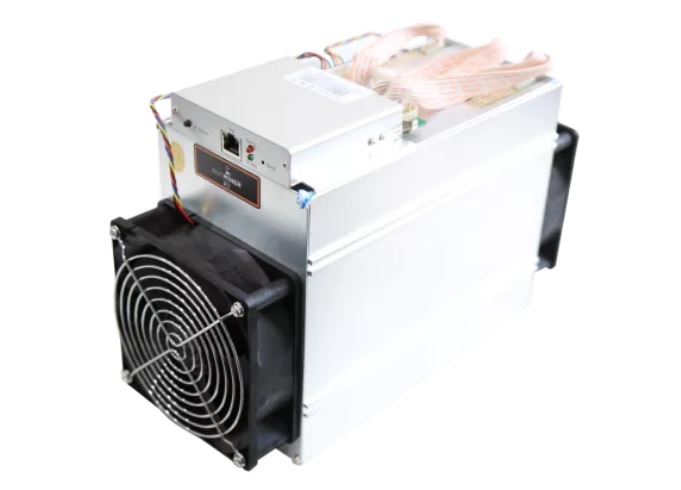
Suitability for residential use is also enhanced by the machine’s small size. Weighing just 4.2 kg the T9+ could be an attractive option for those looking to start mining bitcoin.
The Antminer’s easy-to-grasp user interface setup can be completed extremely quickly and the internal software also allows for the unit to be upgraded when new firmware updates are released.
Unfortunately, like the Antminer S19 Pro, the unit can no longer be purchased directly from Bitmain’s official site. Those interested would need to buy the Antminer T9+ from a third-party seller.
Key Specs:
- Max hash rate – 10.5 Th/s
- Max power – 1432 W
- Noise level – 76 dB
- Temperature range – 0 – 40 C
- Weight – 4.2 kg
- Price – $399
Bitmain Antminer T9+ Pros:
- Requires extremely low upfront capital costs
- Backed by a reliable manufacturer
- Low electricity consumption and small size makes the unit more applicable for residential operations
Bitmain Antminer T9+ Cons:
- Hash rate output is low
- Can’t be purchased directly from manufacturer
- The model is older which may mean it can’t be acquired as easily
6. Canaan AvalonMiner 1246
In September 2020, shortly after Canaan released the AvalonMiner A1166 Pro, the mining manufacturer released the 1246 series. While maintaining max power consumption at a comparable 3420 W, Canaan enhanced the max hash rate output of the 1246 model to 90 Th/s
Logically, the higher hash rate output comes at a higher price tag of $1,599. However, for a similar power requirement, AvalonMiner’s 1246 does offer better efficiency. Therefore, it may be an attractive option for an experienced bitcoin miner who is happy to swallow the higher upfront costs.
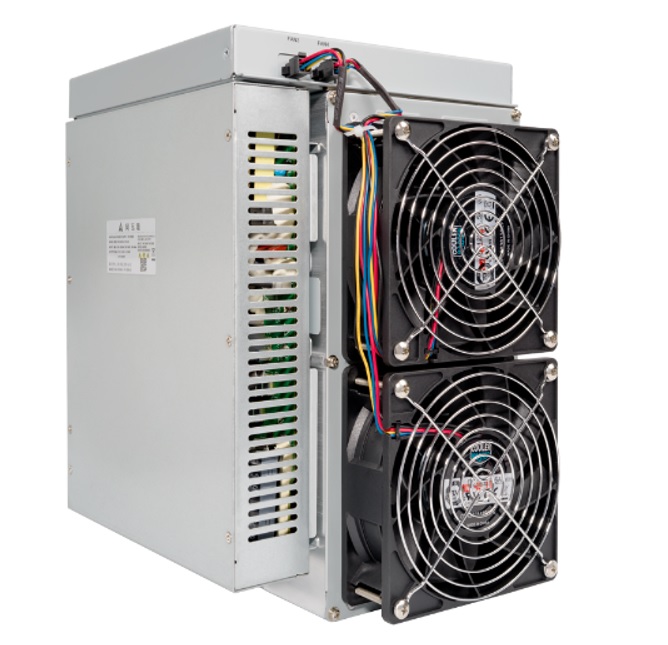
Interestingly, the unit can operate in a temperature window between –5 and 35 C, which, like the A1166 Pro, makes it advantageous to those in colder climates. With that being said, the unit is also fitted with 4 cooling fans that help to regulate the unit’s operating temperature.
Similar to the A1166 Pro, the 1246 benefits from AvalonMiner’s intuitive mining software and can be purchased directly from the manufacturer with a 365-day warranty.
Key Specs:
- Max hash rate – 90 Th/s
- Max power – 3420 W
- Noise level – 75 dB
- Temperature range – -5 – 35 C
- Weight – 12.8 kg
- Price – $1,599
Canaan AvalonMiner 1246 Pros:
- Enhanced efficiency when compared to A1166 Pro
- Reasonably priced for a mid-range hash rate unit
- Can be used with AvalonMiner’s intuitive mining software
- Can be purchased directly from the manufacturer with 12-month warranty
Canaan AvalonMiner 1246 Cons:
- High power consumption which may be better suited to industrial operations
- Higher risk that electricity costs eat into mining profits
7. Canaan AvalonMiner A1166 Pro
Launched in August 2020, the AvalonMiner A1166 Pro is a mining unit that sits in the middle of the field with regard to hash rate output and was initially released as an upgrade to the previous A1166 model.
At a maximum power consumption of 3400 W, the miner produces a maximum hash rate of 81 Th/s. This output places it in direct competition with WhatsMiner’s M32 and the AvalonMiner 1246. However, impressively, despite offering a slightly higher hash rate, the A1166 Pro is more economically priced at $810.
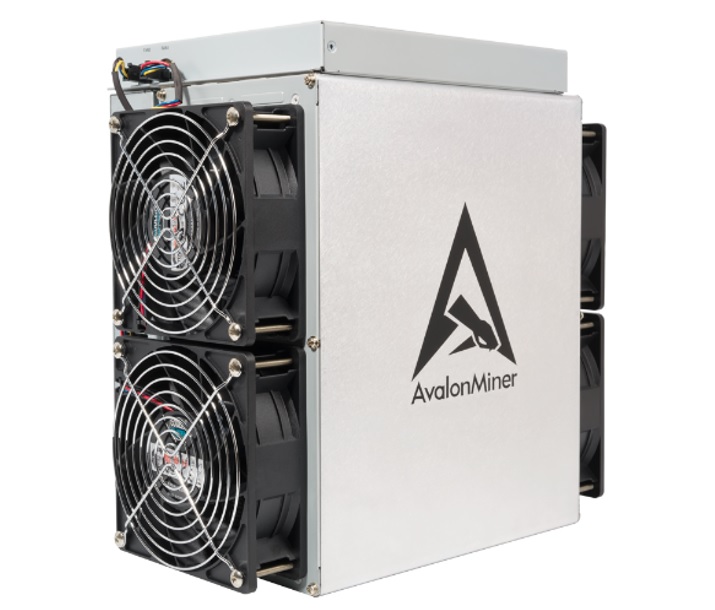
In addition to a respectable hash rate to price ratio, another distinguishing feature of the miner is AvalonMiner’s proprietary mining dashboard. According to reviews, the dashboard is one of the most intuitive in the industry which could be advantageous to those unfamiliar with the mining process.
The AvalonMiner A1166 Pro is the first miner on our list produced by Canaan, a crypto miner manufacturer based in China. Like MicroBT, Canaan commands a smaller market share than the market leader, Bitmain. But, the company has become well-known and respected thanks to a focus on building crypto miners using artificial intelligence and cutting-edge technology.
The AvalonMiner A1166 Pro can still be actively purchased from the manufacturer’s native website with a 365-day warranty.
Key Specs:
- Max hash rate – 81 Th/s
- Max power – 3400 W
- Noise level – 75 dB
- Temperature range – –5 – 35 C
- Weight – 12.8 kg
- Price – $810
Canaan AvalonMiner A1166 Pro Pros:
- One of the most efficient mid-range hash rate units
- Requires low upfront costs when compared with competitors
- Leverage’s AvalonMiner’s Intuitive mining software
- Can be purchased directly from the manufacturer with 12-month warranty
Canaan AvalonMiner A1166 Pro Cons:
- High power consumption which may be better suited to industrial operations
- Higher risk that electricity costs eat into mining profits
8. MicroBT WhatsMiner M3X
The MicroBT’s WhatsMiner M3X is another quality rig for mining Bitcoin. With a maximum hash rate of 12.5 Th/s the M3X’s performance places it in direct competition with Bitmain’s Antminer T9+ and Halong’s DragonMint T1.
The M3X’s 12.5 Th/s is produced at a maximum power consumption of 2050 W. Unfortunately, this means the unit’s efficiency is not as strong when compared to other models of similar capacity.
However, what stands out with the M3X is the unit’s environmental versatility. It offers one of the broadest operating ranges, which extends down to a minimum temperature of -10 C and up to a maximum temperature of 45 C. This versatility is packaged into a small unit that weighs just 7.8kg.
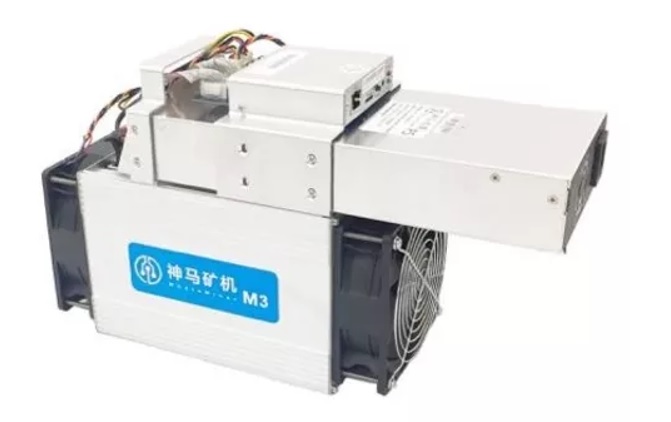
With that being said, strong environmental versatility comes at the cost of high noise emissions. At 78 dB, the unit is loud which would likely mean it is only applicable for industrial mining operations.
Like other WhatsMiner models, the M3X can be configured using WhatsMiner’s proprietary dashboard. While not as intuitive as the AvalonMiner bitcoin mining software, it should be straightforward to get the unit operational.
Unfortunately, as a slightly older model, the M3X can no longer be purchased directly from the manufacturer and must, therefore, be acquired through other retail platforms.
Key Specs:
- Max hash rate – 12.5 Th/s
- Max power – 2050 W
- Noise level – 78 dB
- Temperature range – -10 – 45 C
- Weight – 7.5 kg
- Price – $1100
MicroBT WhatsMiner M3X Pros:
- Extremely wide operating temperature range
- Produced by reliable manufacturer
MicroBT WhatsMiner M3X Cons:
- High electricity consumption for hash rate output
- Noise emissions are louder than competitors
- Must be purchased through third-party retailers
9. Bitmain Antminer S5
The Antminer S5 is one of the smallest bitcoin mining units on the list, weighing in at just 2.5kg. But, it remains one of the best options for those who aren’t sure about the process of Bitcoin mining and want to test the process out.
While its max hash rate output of 1.15 Th/s at 560 W cannot compete with the capacity of larger miners, the S5 offers excellent functionality at an economical price. As a result of technological advances, the miner can now be acquired for as little as $299, which is why it is such a favorite among first-time miners.
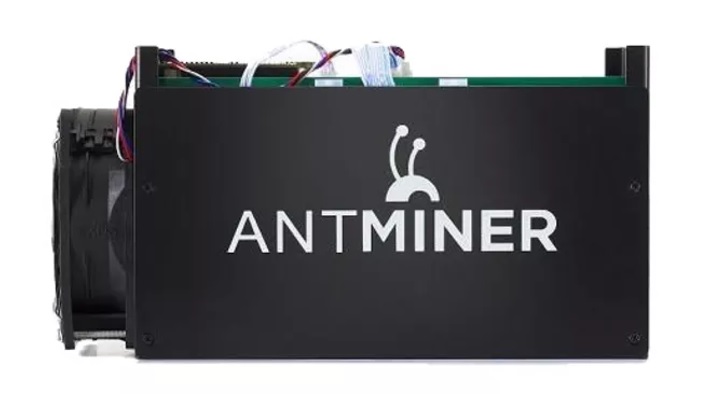
Thanks to its small size and lightweight construction the miner takes up very little space and with noise emissions sitting at 65 dB the Antminer S5 is certainly the best contender for use in a family home.
Like other Antminer models, the S5 has the backing of Bitmain, therefore, even S5 units acquired today should be dependable. In addition, Bitmain’s intuitive proprietary software should ensure that the S5 can be set up and connected to most of the top mining pools by those less experienced.
Unfortunately, like the S19 Pro, the S5 can no longer be purchased directly from Bitmain and, therefore, would need to be acquired via a third-party seller.
Key Specs:
- Max hash rate – 1.15 Th/s
- Max power – 560 W
- Noise level – 65 dB
- Temperature range – 0 – 30 C
- Weight – 6.5 kg
- Price – $299
Bitmain Antminer S5 Pros:
- Backed by a reliable manufacturer
- One of the cheapest mining rigs currently available
- Small size and lower noise emissions mean it is likely the most applicable for a family home
Bitmain Antminer S5 Cons:
- Small hash rate output which will limit mining profitability
- As an older unit it might be harder to acquire from third-party resellers
10. Halong DragonMint T1
The final mining rig on our list is the DragonMint T1, also known as the “Terminator” miner. It was first released in April 2018 as a direct competitor to Antminer’s S9 unit – the most efficient unit at the time. Although new models have since been released, for $1,600 the DragonMint T1 remains a strong option.
The T1 miner produces 16 Th/s for every 1480 W of power consumed which is far more efficient than the Antminer T9+ and the WhatsMiner M3X which also operate in this range. In addition to the standard output, the DragonMint T1 was also one of the first ASIC miners to implement a feature called ‘AsicBoost’, which allows the unit to become 20% more energy efficient at certain times during the day.
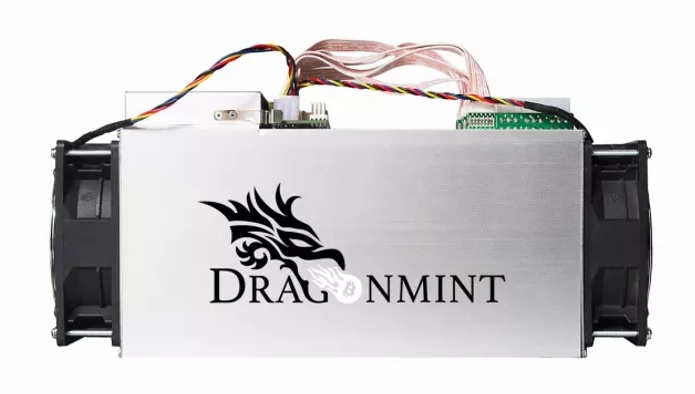
Weighing in at 6kg, the unit is on the lighter side of the top 10 list and, therefore, could be more applicable to those that have less room for a mining rig. The miner also boasts a wide operating temperature, which is helped by two internal nine-blade fans.
The ASIC unit was the flagship product of mining manufacturer, Halong Mining. In 2018 units were sold through a website called MyRig which was the distribution arm of Halong Mining. Unfortunately, this relationship no longer appears to exist, so interested buyers would need to source a DragonMint T1 from a third-party seller.
Key Specs:
- Max hash rate – 16 Th/s
- Max power – 1480 W
- Noise level – 75 dB
- Temperature range – 0 – 40 C
- Weight – 6 kg
- Price – $1,600
Halong DragonMint T1 Pros:
- One of the most efficient low hash rate mining hardware available
- Wide operating temperature range suitable for various environments
- Unique AsicBoost feature allows for 20% more hash rate output
Halong DragonMint T1 Cons:
- Cannot be purchased directly from manufacturer
- Limited news on manufacturer’s current status
- Expensive when compared to similar low hash rate mining rigs
The Basics of Bitcoin Mining Hardware
The term is often used interchangeably with a crypto miner, a Bitcoin miner, and a mining rig. It is essentially a piece of hardware that generates computing power to validate transactions and ensure that the blockchain remains secure. To validate transactions and secure the blockchain, miners must solve Bitcoin’s mining algorithm. This requires Bitcoin mining hardware – a broad term used to describe computers that are used to solve Bitcoin’s mining algorithm. In return for sacrificing computing power miners are rewarded with BTC, which comes in the form of block rewards.
These Are The Different Types of Bitcoin Miners
There are several forms of Bitcoin mining hardware. Each form provides different functionality and differing degrees of hashing power.
CPU Miners
Central processing units (CPUs) were one of the first types of computational hardware used for mining Bitcoin. CPUs are found within most laptop and desktop PCs and, therefore, were frequently used to mine BTC shortly after Bitcoin was first launched in 2009. However, as the average CPU hash rate output is measured in kilohashes per second (kh/s), CPUs are now far below what is required for the best Bitcoin mining hardware.
GPU Miners
As miners looked for alternatives to CPUs, many turned to graphical processing units (GPUs) that allowed for GPU mining. With greater computational efficiency GPU miners can produce hash rate figures measured in megahashes per second (mh/s), which is a 1,000-fold increase from CPUs.
FPGA Miners
Field-programmable gate array (FPGA) miners were designed to be faster and more efficient than GPUs. Field-programmable means that these miners can be programmed at any time to perform a new function. Meanwhile, the use of gate arrays allows one function – such as bitcoin mining – to be optimized.
While more efficient than most GPUs, the performance of FPGA miners can vary considerably depending on the function being completed. However, these units have become favored by many Bitcoin miners as the units can also be used for multiple other crypto-mining algorithms.
ASIC Miners
Application Specific Integrated Circuit (ASIC) miners are currently the most popular form of Bitcoin mining equipment in the industry. As bitcoin’s mining difficulty increased, increased computational efficiency became a necessity. As a result, manufacturers developed ASIC mining chips. ASIC mining chips only focus on one function, such as solving Bitcoin’s algorithm (SHA-256).
By focusing on one function, ASIC miners are able to complete far more computations. While the hash rate from the first ASIC miners was measured in mh/s, modern ASIC miners now output hash rates measured in terahashes per second (Th/s) – another one thousand-fold increase in comparison to GPUs. Given its popularity and the preferred hardware to mine Bitcoin, individuals have turned to building DIY ASIC rigs to compete for mining rewards.
Gridseed Miners
Gridseed miners are an evolution from ASIC units that enhance functionality thanks to the addition of Scypt algorithm compatibility. While ASIC units must target one mining algorithm – SHA-256 in the case of Bitcoin – gridseed miners can target multiple mining algorithms at the same time.
The performance of gridseed miners varies depending on the crypto-mining algorithms being targeted. For example, if gridseed units are targeting both Bitcoin and Litecoin, some units have the capacity to offer hash rate outputs measured in gigahashes per second (gh/s) for Bitcoin, while simultaneously offering hash rate outputs measured in kilohashes per second (kh/s) for Litecoin.
Consider This When Selecting Bitcoin Mining Hardware
When searching for the best hardware for a Bitcoin mining operation, it’s important to review all of these key factors to ensure that individual requirements are met.
- Hash rate. The hash rate is a measurement that indicates how quickly mining hardware can solve Bitcoin’s mining algorithm and, therefore, mine Bitcoin. The higher the hash rate a rig can produce, the more likely it is that a miner will be awarded the chance to add the next block to Bitcoin’s blockchain and earn BTC block rewards. While higher hash rates are better, they often come at the cost of high power consumption and higher hardware costs. However, given the extended length of time to mine a single Bitcoin, investing in hardware with maximum hash rates isn't a bad idea
- Power consumption. The power consumption of a miner defines how much electricity the miner requires to reach maximum hash rate output. The more power that is required the higher the electricity costs will be. The consumption of a mining rig can be used to calculate the profitability of mining Bitcoin using online calculators.
- Efficiency. The best mining units are those that offer a balance between hash rate output and power consumption. This is commonly described as mining efficiency. It is important that the likelihood of earning BTC block rewards makes sense when compared with the cost of electricity to get that result.
- Price. The cost to purchase a single miner or multiple hardware units is important for solo mining. A single rig such as the Bitmain Antimer X19 XP can cost around $6,499 each. However, the price of Bitcoin mining hardware is often correlated with the unit’s maximum hash rate output. The higher the price, the higher the output. Alongside the hash rate, the price of miners can also fluctuate based on supply and demand. Miners are rarely kept to a fixed price.
- Operating environment. Finally, it’s important to take into account what operating environment a miner will be placed in. All miners have an operating temperature window and the majority are not quiet. The operating conditions and noise emissions should always be checked before a purchase is made. This can impact where the hardware is located and housed from environmental factors, as heat is one of the main ways mining can damage a GPU hardware rig.
Frequently Asked Questions
What is a crypto mining rig?
Crypto mining rigs are computing setups comprising physical hardware that has been built purposefully to mine cryptocurrencies such as Bitcoin. In full form, mining rigs are often composed of crypto mining hardware, such as a GPU or ASIC miner, a motherboard, a power supply unit, a CPU, RAM, and storage. Combined with an Internet connection and mining software, the rig can compete for Bitcoin block rewards.
Which Bitcoin miner is the most profitable?
The best Bitcoin miners offer high hash rate outputs at the lowest power consumption possible. With this in mind, Bitmain’s Antminer S19 XP is one of the most profitable miners currently in existence. For a maximum power consumption of 3010 W the S19 XP can produce 140 TH/s. Although, the actual profitability will depend on the power consumption rates which vary from country to country.
How much does a Bitcoin mining machine cost?
Bitcoin mining machines can vary in cost from a few hundred dollars up to several thousand dollars. The cost of a bitcoin miner can be affected by hash rate output, supply and demand, and the reputability of the manufacturer.
What are some known Bitcoin mining hardware companies?
Well-known Bitcoin mining hardware companies included Bitmain, MicroBT, and Canaan. While Bitmain is the oldest and holds the largest market share, MicroBT and Canaan have become respectable competitors within the space.